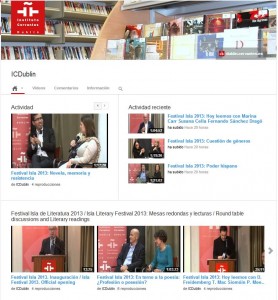Blog del Instituto Cervantes de Dublín
Torre Martello
Safeguarding Intangible Cultural Heritage
 No doubt you are well aware of the rudiments of flamenco, of how to dance a tango, and you will almost certainly have heard of the advantages of a Mediterranean diet.
No doubt you are well aware of the rudiments of flamenco, of how to dance a tango, and you will almost certainly have heard of the advantages of a Mediterranean diet.
Perhaps you might also have heard of the human towers in Catalonia, or the Day of the Dead festivities in Mexico, and perhaps even the quirky displays of Barranquilla’s Carnival, in Colombia.
But, do you know what Majorca’s Chant of the Sybil is, or what it sounds like? Or the Whistled language of the island of La Gomera (one of the Canary Islands)? How about the Scissors Dance in Peru?
Each of these cultural practices has something in common: they are all part of UNESCO’s list of Intangible Cultural Heritage.
If you would like to find out more about any of these cultural phenomena, the following is a full list of those taking place in Spanish-speaking countries around the world:




